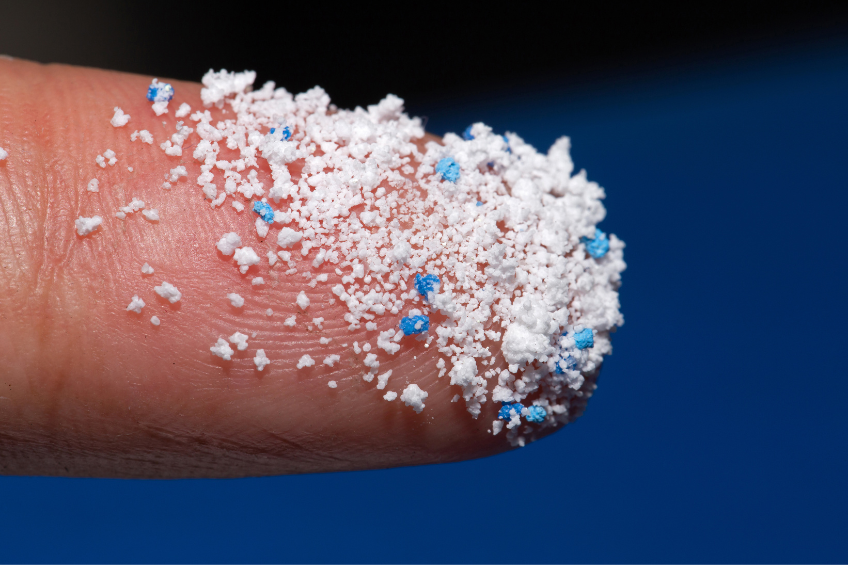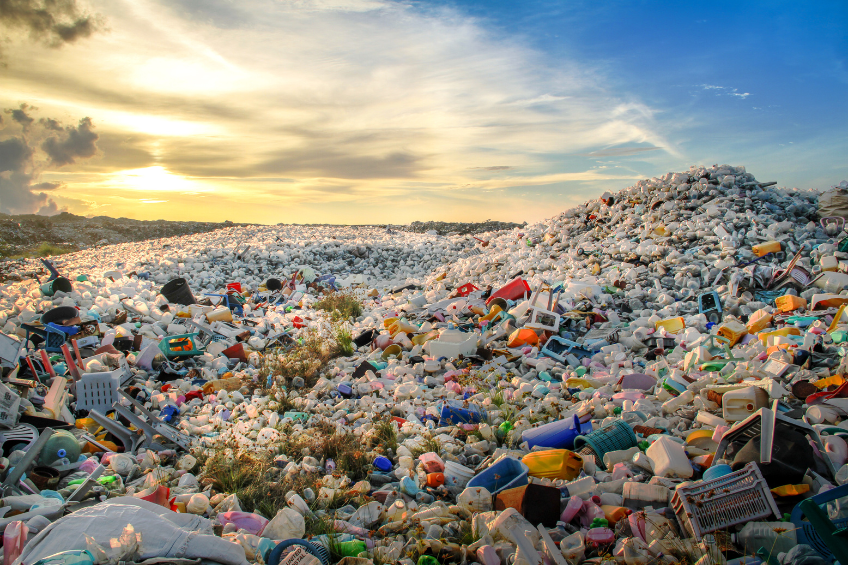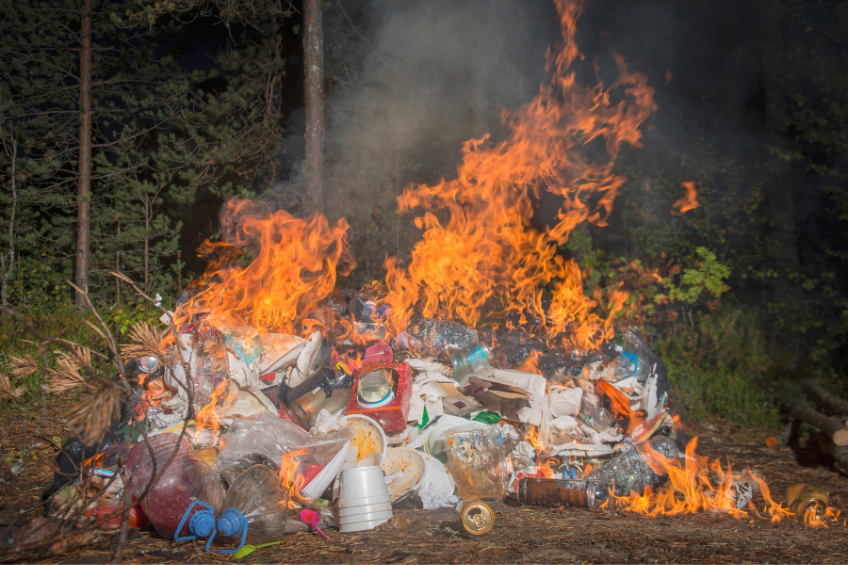The Study of Microplastics & Its Effect on Air Quality & Our Health
As the snow thaws here on Long Island I get a glimpse of the sleeping grass and the toys and paraphernalia left in the yard all winter long. Can those basketballs be revitalized with a simple car pump? What about those hard plastic colorful balls that the toddlers enjoy throwing at each other in the beautiful spring weather?

Noticing one of the colorful balls makes me think ask what will happen when I throw that one away? It looks like it should finally go into the garbage along with the other broken toys that remain in the corner of the yard year after year. Plastics that begin to shed are harmful to people, animals and the environment.
Plastic was discovered by a Belgian chemist who came to the United States in 1907 while he was looking for a substitute for shellac. This new chemical discovery gave freedom to the housewives of the 1950’s by adding disposable cutlery and plates to their shopping carts freeing women from household drudgery. But, by the late 1960’s warnings went out to the public of how the discarded plastics were causing havoc in the oceans, the mountains and just about everywhere else. The trouble is plastic does not get totally dissolved unless it’s burned and this is becoming not only a hazard to the natural habitats of the earth but to humans as well.
What are Microplastics and how are they formed?
That old backyard ball that I am throwing out will disintegrate until it becomes tiny colorful particles. When those particles shrink to less than 5mm or 0.2 inches they are called microplastics. The problem is that although you would think that being smaller is better that is not the case in relation to people and animals. When plastics erode into microplastics they enter not only the air and water but into fish, meat, vegetables and fruit and most significantly into the lungs of individuals.

There are several types of microplastics, primary, secondary and nano plastics. For this article we will call all three types, microplastics, Microplastics are smaller than secondary and bigger than nano, which are released from plastic based products such as clothes and fishing nets. Anything that is made from microfibers when washed will discharge tiny particles into the environment. Fancy cosmetic soaps such as body scrubs and beads which have tiny particles to remove dry skin are made with microplastics.
Why Are Microplastics so Lethal?
Although microplastics have been known about for a while, it is only lately that they are being researched since most of the plastic research that has been done has been on larger pieces such as plastic bags in the oceans. These tiny particles are more harmful to humans since no human being will ingest a plastic bag willingly. On the other hand, microplastics are found in the organs of humans such as the heart, brain, stomach and even placentas that have been studied after they are delivered along with a fresh new apparently healthy baby. Once the baby is born the seemingly healthier way to feed it is breastfeeding, yet this harmful plastic is found in the breast milk and in the baby’s first dirty diaper.
A pediatrician of infectious diseases, Dr. Desiree LaBeaud, claims that “plastic never goes away” it just gets smaller and smaller until it is categorized as microplastics. It’s hard to believe but microplastics have been found to be present in tea bags and bottled water which are ingested by people who are concerned with their health. By drinking herbal teas and bottled water you would think that these drinks would be good for their wellbeing. Until now microplastics have been found in over one thousand species including humans. Plastics just don’t go away.

Children who are still growing are even more at risk than adults. According to Dr. Kara Meister, a children’s ENT, thyroid cancer has become more common, so she decided to do some research herself to see why this was happening. One common operation, tonsillectomy, has become popular once again and after performing this procedure Dr. Meister decided to check out the tonsils after removal. To her chagrin not only did she find traces of microplastics and the surface of the tonsils but also deeper. In fact, horrifically when checking the tonsils under a microscope she found specks of Teflon. Studies of the dangers of microplastics in humans are just beginning but Dr. Meister predicts that in a year or two there will be published studies to see how hazardous these tiny particles are to children.
Can the Presence of Microplastics be Tested?
There are already mail in kits such as Million Marker (developed by environmental health scientist Jenna Hua) which screens the urine for traces of microplastics. Another testing kit made by Bryan Johnson called Blueprint, screens through a blood test.
There is a microscope called a Micro-Raman that can detect specks of plastic under one micrometer but unfortunately this is not for home use. We can decrease the amount of microplastics that can build up over time in our homes by buying natural materials instead of synthetics for couches, chairs and clothing such as cotton and wool. If you do have plastic items in your home, try to keep them clean and out of direct sunlight. If you see that your plastic toys are starting to peel it is time to replace them. My grandson will be disappointed when spring comes, and his favorite-colored ball is missing. I hope to find a similar one to replace it.
Can Microplastics Cause Climate Change?
Since they are so tiny microplastics can slip through even the finest filters. Their size is their strength and even if you have the best HVAC filters you will not know unless you test the people in your household to know how well the filters are working. Studies have shown that these microscopic specks of plastic are constantly flowing in the air around us whether it’s indoors or out. We worry about regulations of emissions from older vehicles and the government makes sure to update their emission laws for new vehicles. When vehicles drive at high speeds their tires no matter how high the quality will spin and cause microplastics to go up into the atmosphere.

According to Swiss Chemist Denise Mitrano, microplastics are able to change cloud patterns, by altering the cloud’s temperature and rain trends. When ice or water compresses on tiny pieces of dust, soot, and other pollutants, clouds form. These tiny specks are also called aerosols which can have a negative impact on how we view the sunset, the clouds and most critically the air quality.
The fact that microplastics can actually seed clouds came as a surprise to chemists who did not realize that the sludge in the air came from microplastics. The reason they were taken aback is the plastic is designed to repel water, and it would not be feasible that they could seed the droplets from clouds. They also believed that plastic problems were more prevalent on the land and sea than in the air. This holds true for clean and new plastic beads and other objects that have recently been manufactured. However, when plastic fly’s high into the sky it merges with different specks along the way such as salt. Once the plastic aerosols have aged or changed in their makeup, they are more likely to cling to water and clouds.
Interestingly, there are two types of clouds, low and high, which are both affected by microplastics. If “the light as air” clouds gain weight from the pollution of the microplastics they could increase or decrease the amount of rain that the clouds produce. For example, polluted clouds last longer and start raining down later but cause heavier rain than less polluted clouds.
Final Words
Our president has recently signed an order bringing back plastic straws to replace the poorly accepted paper ones. Our supermarkets have begun to give out free disposable plastic bags again after a couple of years of charging for them. Plastic bags and items that are larger are easier to tackle to prevent animals and fish from eating them. Now a new and dangerous pollutant has taken the scientific community by surprise, microplastics. These are harmful when inhaled and the problem is they are too tiny to see with the naked eye. You may have them in your home and not even know them unless someone has severe symptoms, and you opt for a professional testing service. These tests are relatively new but are showing promise.

Our environmental professionals have tackled air quality problems in the past, ranging from smoke from raging fires to vehicle air pollution. The government has come up with regulations to reduce vehicle emissions. Hybrid and electric cars are leading the way for improvement in air quality. Now scientists are telling us that rain clouds are affected by microplastics altering clouds and rainfall paths. We all must try our best to keep the air quality in and out of our homes satisfactory; at least when we can control it.

